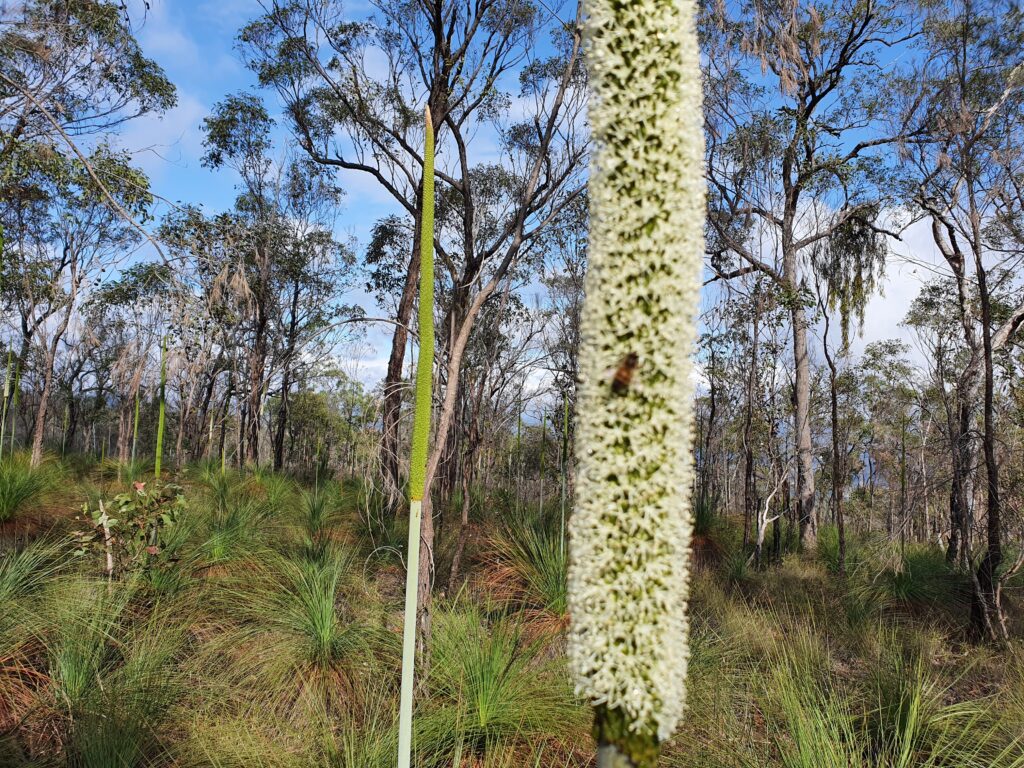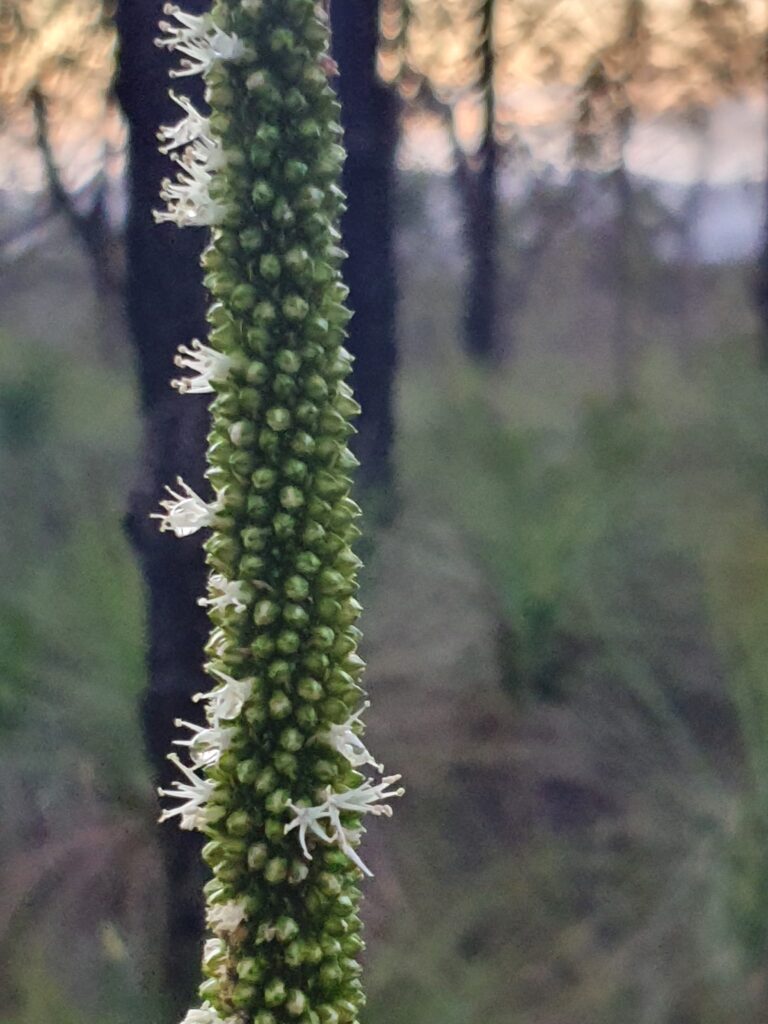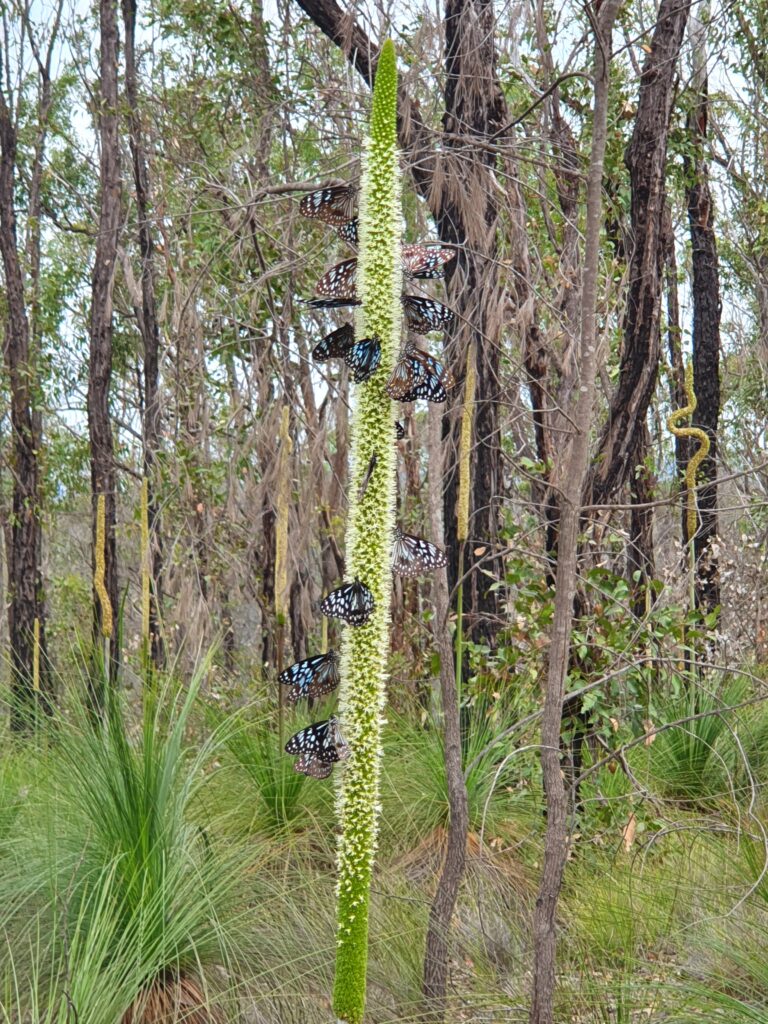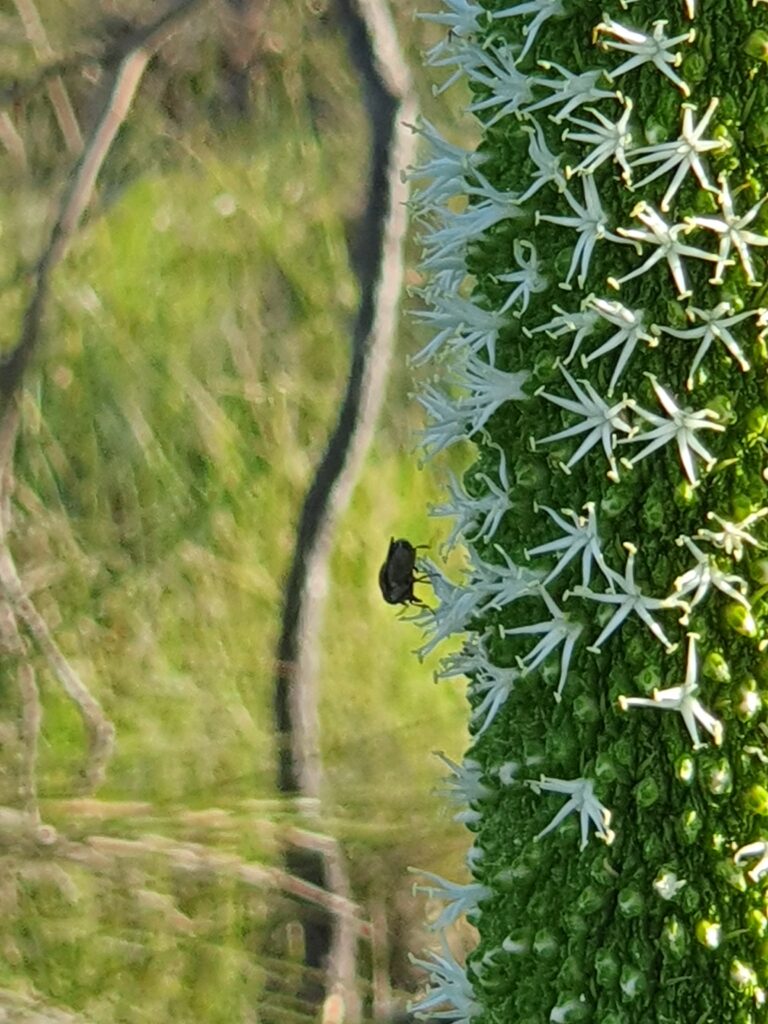Xanthorrhoeas are perenial flowering plants, but may take several years to flower. X. johnsonii flowers are bisexual with male flowers developing before female flowers. Self-polination is possible but usually not necessary due to insects doing a pretty good job of polinating the plants. We tend to see a lot of butterflies and some bees around the flowering spikes.
The green spike that flowers on top of the stalk can sometimes grow up to 4m long with flowers attracting many insects and birds. According to some websites Xanthorrhoea johnsonii flowers during the seasons of spring, autumn or winter.
According to Borsboom (2005) X. johnsonii flowers from April - December in the south-east Queensland area.
The average flowering period is around 38 days although this can vary depending on how early or late in the season the plants started to flower. Mature plants flower on average every 5 years.
Our observation is that most of our Xanthorrhoeas sprung up stalks around September and then started flowering around October. At around 24 October I would say that flowering started about a week ago. Close to Christmas some of the seed pods are starting to pop. Early January almost all of the seed pods have opened up. So, between September to January we're looking at a cycle of about 3 - 4 months on average.
We have both European and native Australian bees on our property, but we found that the native Australian bees are more likely to gravitate to the flowers of grass plants along with butterflies, although we do see the European bees there from time to time as well. According to the Environmental Sciences Division of the QLD government an important pollinator of grasstrees is the native bee Trigona caronaria with its main activity being around 9:30am peaking at 11am. We noticed huge amounts of butterflies around June / July on some of the stalks that flowererd around that time. We didn't notice that many butterflies during early October, but since we've had more grasstrees flower the butterfly population seem to have increased again.
Some of our stalks did not end up flowering, and thus not forming seeds. Instead they just turned brown and aged. We are not sure why, but considering that the flowering spike is the active growth point for the grass tree we figure that it may be to do with the health of the plant. There is a tremendous amount of energy that goes into sending up a flower spike, so if your plant is not healthy it may be best to cut off the spike so that energy resources can go into leaves and the root system.
According to Bruinsma Grasstrees it is natural for grass trees to remain dormant and not produce new flowers or new leaves for months or years after flowering due to the energy needed to produce a flowering spike.




